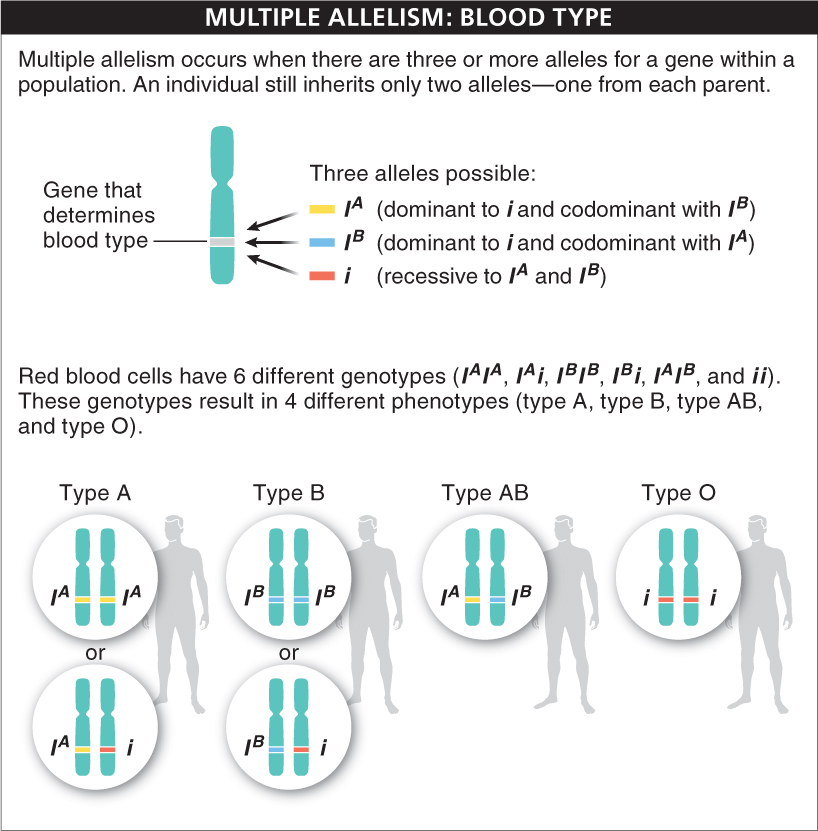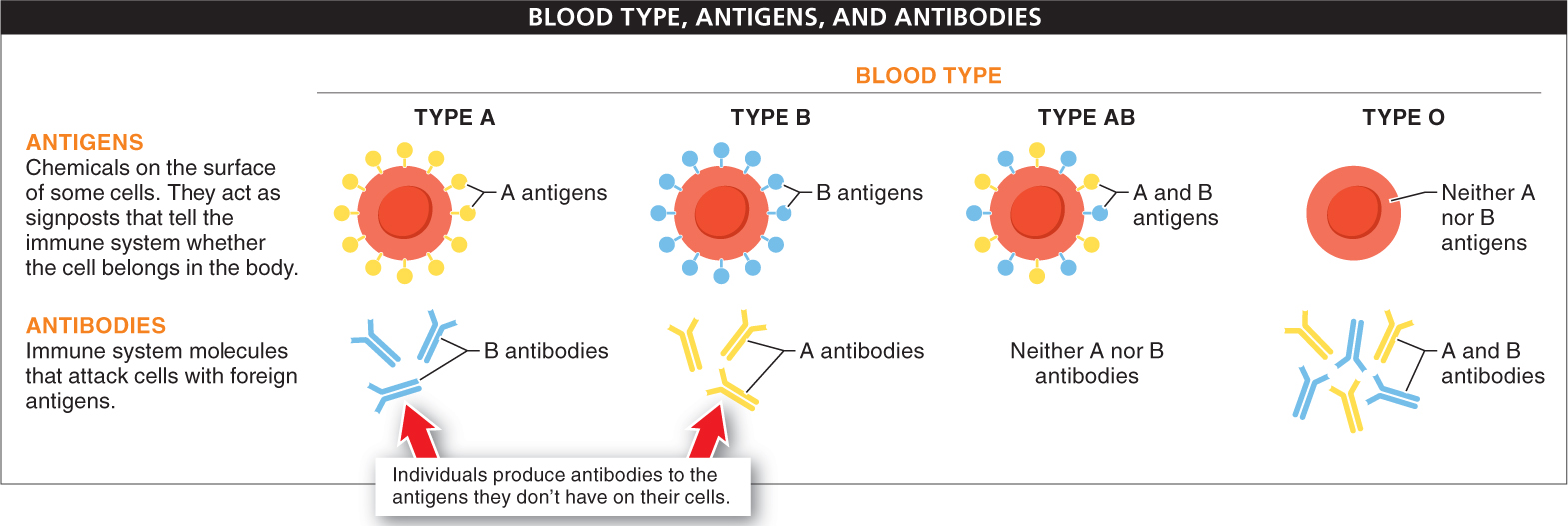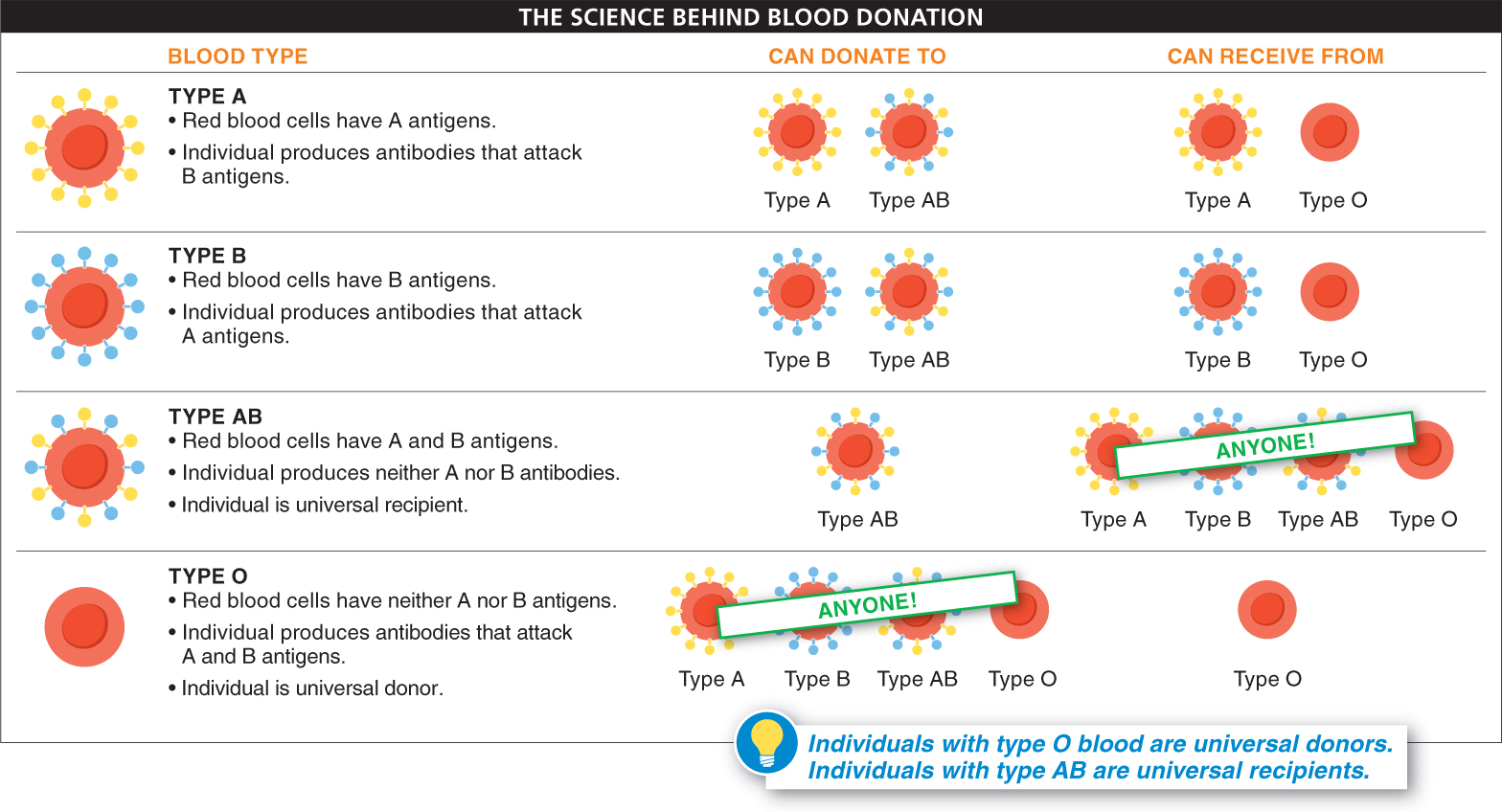Do you know your blood type? It can be O, A, B, or AB. Each of these different blood types (also called blood groups) indicates something about the physical characteristics of your red blood cells and has implications for blood transfusions—
Inheritance of the ABO blood groups provides the simplest example of multiple allelism, because there are only three alleles. We can call these alleles IA, IB, and i. The IA and IB alleles are both completely dominant to i, so individuals are considered to have blood type A whether they have the genotype IA IA or IA i (FIGURE 7-20). Similarly, an individual with the genotype IB IB or IB i is considered to have blood type B. If you carry two copies of the i allele, you have blood type O. The IA and IB alleles are codominant with each other, so the genotype IAIB gives rise to blood type AB. Consequently, with these three alleles in the population, individuals can be one of four different blood types: A, B, AB, or O.

What are the phenotypes of these alleles? An individual’s blood-
This means that individuals with blood type AB have red blood cells with both A and B antigens, while individuals with blood type O have red blood cells that have neither A nor B antigens on their surface (FIGURE 7-21).

Antigens on red blood cells play a role in the body’s disease-
Why are people with type O blood considered “universal donors”? Why are those with type AB considered “universal recipients”?
Individuals with only B antigens on their red blood cells produce antibodies that attack A antigens. Individuals with blood type O, who have neither A nor B antigens on their red blood cells, produce antibodies that attack both A and B antigens. Individuals with blood type AB don’t produce either type of antibody (or else they would have antibodies that attacked their own blood cells). From this information, we can deduce which blood types can be used in transfusions. Individuals with blood type O are universal donors, because their red blood cells have no A or B antigens and so do not trigger a reaction from either type of antibody. And individuals with blood type AB are universal recipients, because they do not produce antibodies to either the A or B antigen. This is shown in FIGURE 7-22.

296
297
Another marker on the surface of red blood cells is the Rh blood group marker. (Note that the Rh blood group is not an example of multiple allelism. A single gene with just two alleles determines the presence of the Rh marker. However, like the ABO blood groups, the Rh marker restricts the type of blood a person can receive in a transfusion.) Individuals who possess red blood cells that carry the Rh cell surface marker have one or two copies of the dominant Rh marker allele, and they are said to be “Rh-
Beyond the ABO marker groups, there are many, many genes with multiple alleles—
TAKE-HOME MESSAGE 7.10
In multiple allelism, a single gene has more than two alleles. Each individual still carries only two alleles, but in the population, more than just two alleles exist. This is the case for the ABO blood groups in humans.
If someone is blood type O, what antigens and antibodies do they possess?
Individuals with blood type O have neither A nor B antigens on the surface of their red blood cells. However, they do produce antibodies that attack both A and B antigens. Because their red blood cells lack A or B antigens and, therefore, do not trigger a reaction from either type of antibody, they are “universal donors.” But they can only receive blood that is type O.